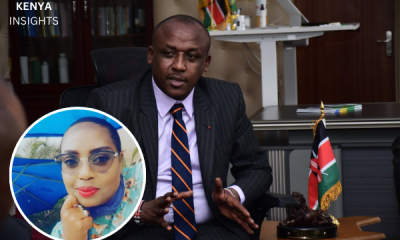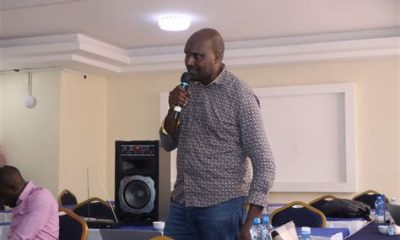How Kenya’s constitutional power of mercy operates through a structured process that balances compassion with accountability
In the dimly lit corridors of Kenya’s overcrowded prisons, hope often comes in the form of a presidential pardon – a constitutional power that can transform a life sentence into freedom, or a death sentence into life imprisonment.
But how exactly does this system work, and what safeguards ensure it serves justice rather than undermining it?
The Constitutional Framework
Kenya’s presidential pardon system operates under Article 133 of the 2010 Constitution, which grants the President what is formally known as the “Power of Mercy.” This constitutional provision allows the head of state to grant full pardons, reduce sentences, commute penalties, or provide temporary respite to convicted individuals.
Unlike a judicial acquittal, a presidential pardon does not erase the conviction from an individual’s record.
Instead, it mitigates the consequences, reflecting what constitutional scholars describe as the state’s capacity for compassion within the framework of justice.
The power is not exercised in isolation.
The Power of Mercy Act of 2011 established the Advisory Committee on the Power of Mercy, ensuring that presidential decisions are informed by expert analysis rather than arbitrary judgment.
The Guardian Committee
At the heart of Kenya’s pardon system lies the Advisory Committee on the Power of Mercy, chaired by the Attorney General.
The committee includes the Cabinet Secretary for Interior, the Principal Secretary responsible for correctional services, and other appointed experts in law and human rights.
This body serves as both investigator and advisor, receiving petitions for clemency and conducting thorough reviews that include consulting victims, families, and relevant authorities.
Their recommendations, while not binding on the President, form the foundation for most mercy decisions.
“The committee ensures that the process maintains constitutional principles while serving the public interest,” explains a senior official familiar with the process, speaking on condition of anonymity due to the sensitive nature of the work.
The Five-Step Journey to Clemency
The path to a presidential pardon follows a structured five-step process:
Step 1: Petition Submission – Convicted individuals, their families, legal representatives, or even the Advisory Committee itself can initiate clemency petitions. These are typically submitted through correctional services or directly to the committee.
Step 2: Review and Investigation – The committee examines multiple factors including the nature and severity of the crime, the convict’s behavior and rehabilitation progress, the impact on victims and society, and any humanitarian considerations such as health or family circumstances.
Step 3: Recommendation – After deliberation, the committee submits detailed recommendations to the President, providing the constitutional basis for informed decision-making.
Step 4: Presidential Decision – The President decides whether to grant a pardon, commute a sentence, or deny the petition. This decision is communicated through official gazette notices or public announcements.
Step 5: Implementation – If clemency is granted, the Kenya Prisons Service and other relevant authorities implement the decision, adjusting sentences or securing releases accordingly.
Recent Applications and Statistics
The most significant recent application of presidential mercy occurred in December 2024, when President William Ruto pardoned 4,753 petty offenders during Jamhuri Day celebrations.
This mass clemency included 4,735 prisoners and 18 individuals whose death sentences were commuted to life imprisonment.
This followed a historical pattern established by previous presidents.
Daniel arap Moi and Mwai Kibaki regularly used national holidays to grant clemency to thousands of inmates, particularly those convicted of minor offenses, as part of broader prison decongestion efforts.
The scale of these pardons reflects Kenya’s ongoing struggle with prison overcrowding.
According to correctional services data, Kenya’s prisons operate at nearly double their intended capacity, making presidential pardons a practical tool for system management alongside their humanitarian purpose.
Criteria for Mercy
While the President maintains broad discretionary power, the Advisory Committee evaluates petitions against specific criteria to ensure fairness and transparency:
- Rehabilitation Evidence: Demonstrable remorse, good conduct, and successful rehabilitation in prison
- Health and Age Considerations: Terminal illness, advanced age, or other humanitarian concerns
- Nature of Offense: Priority often given to minor offenses or cases with significant mitigating circumstances
- Public Interest: Assessment of how the pardon might impact society, victims, and the broader justice system
- Time Served: Whether the convict has completed a significant portion of their original sentence
Constitutional Limitations
The presidential pardon power, while broad, is not absolute. The Constitution explicitly excludes certain categories of offenses, particularly those related to impeachment proceedings.
The Advisory Committee’s structured review process serves as an additional check against potential abuse.
Public scrutiny and media coverage provide informal oversight, with controversial pardons often sparking national debate about the balance between mercy and justice.
Balancing Act: Benefits and Concerns
Presidential pardons serve multiple functions within Kenya’s justice system. They provide genuine second chances for reformed offenders, contribute to prison decongestion, and demonstrate the state’s capacity for compassion.
The system particularly benefits individuals whose circumstances have changed significantly since their conviction or whose offenses were relatively minor.
However, the system is not without controversy. Critics argue that high-profile or politically motivated pardons can undermine public confidence in the justice system, particularly when victims’ rights appear to be overlooked.
The challenge lies in maintaining the balance between mercy and accountability.
Legal experts emphasize that the Advisory Committee’s role is crucial in addressing these concerns.
By providing structured review and expert analysis, the committee helps ensure that presidential mercy serves justice rather than circumventing it.
Regional Comparisons
Kenya’s pardon system stands out regionally for its structured approach.
Unlike the United States, where presidential pardons operate with minimal formal oversight, or the United Kingdom, where royal mercy is rarely exercised, Kenya’s Advisory Committee provides a middle ground between executive discretion and institutional accountability.
South Africa’s similar constitutional framework lacks Kenya’s statutory advisory body, while India’s more bureaucratic approach ties pardon decisions closely to political structures. Kenya’s system appears designed to balance independence with accountability.
Looking Forward
As Kenya continues to grapple with prison overcrowding and justice reform, the presidential pardon system remains a vital tool for balancing the demands of punishment with the possibilities of redemption.
The structured approach established by the 2010 Constitution and the 2011 Act provides a framework that could serve as a model for other emerging democracies seeking to institutionalize executive mercy.
The success of the system ultimately depends on its continued application according to constitutional principles, with the Advisory Committee serving as the guardian of both justice and mercy in Kenya’s evolving legal landscape.


 Investigations7 days ago
Investigations7 days ago
 News1 week ago
News1 week ago
 Business1 week ago
Business1 week ago
 Investigations5 days ago
Investigations5 days ago
 News1 week ago
News1 week ago
 Grapevine1 week ago
Grapevine1 week ago
 Grapevine6 days ago
Grapevine6 days ago
 News5 days ago
News5 days ago














